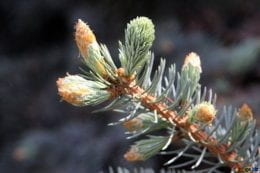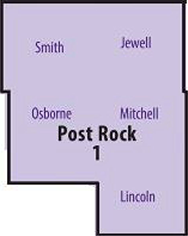-
 Kansas Garden Guide. This full color, illustrated guide is perfect for the Kansas Gardener.
Kansas Garden Guide. This full color, illustrated guide is perfect for the Kansas Gardener.
It features local research-based information. The guide is helpful for new gardeners but includes information for more advanced vegetable growers as well. It covers topics such as planning the garden, soil improvement, watering the garden, and harvesting and storage. My favorite part of the guide is the vegetable crops section. It lists many vegetable varieties, and highlights those best suited for Kansas, when to plant, spacing, and care. This book is a great way to cure the winter blues and dream of sunny gardening days to come.
The Kansas Garden Guide is available at your local Extension Office to purchase. It can also be downloaded for free at https://bookstore.ksre.ksu.edu/pubs/s51.pdf.
- Nature’s Best Hope by Douglas W. Tallamy. Douglas W. Tallamy is a professor in Entomology and Wildlife Ecology at the University of Delaware. This book discusses environmental actions that homeowners can implement in their own landscape to make the planet a better place. My favorite parts of this book are the beautiful pictures of insects and wildlife. Tallamy gives practical tips for every gardener, even those with small landscapes.
The book is available on Amazon.
- Wildflowers and Grasses of Kansas by Michael John Haddock. This book is a beautiful field guide for anyone interested in wildflowers of the Kansas prairie. The book is divided into sections based on the flower’s color. This makes it so easy to identify that purple flower you see every spring. There are 323 plant species represented in the book. It is sure to keep you dreaming of color and warmer weather as you turn the colorful pages.
The book is available from the University Press of Kansas at https://kansaspress.ku.edu/978-0-7006-1370-0.html.
- Growing Great Garlic by Ron L Engeland. I love garlic! I started growing it about 3 years ago and don’t plan to stop anytime soon. It’s such an easy plant to care for and can be used in just about every recipe. Engeland is also the owner of Filaree Garlic Farms in Washington State. They sell many different varieties of seed garlic. This book was gifted to me by fellow Extension Agent Chuck Otte, who is the ultimate garlic grower!
You can purchase this book from Filaree Farms at https://filareefarm.com/growing-great-garlic/.
- Wishtree by Katherine Applegate. This is a heartwarming book that’s perfect for young readers! The story is about an oak tree named Red. In his neighborhood, people write their wishes on pieces of cloth and attach them to Red’s branches. This book spreads a message of wishes, inclusion, and friendships. It is the perfect, quick read for all this winter!
Find it on Amazon.
By: Cassie Homan

 around 49 days since we have recorded at least an inch of rain in our area. Young establishing plants, specifically evergreens and the lawn, are currently under drought stress. Plants with good soil moisture are more drought tolerant and able to with stand winter conditions. Take advantage of the unseasonably warm weather and give your lawn, perennials, young trees, and shrubs a much-needed drink.
around 49 days since we have recorded at least an inch of rain in our area. Young establishing plants, specifically evergreens and the lawn, are currently under drought stress. Plants with good soil moisture are more drought tolerant and able to with stand winter conditions. Take advantage of the unseasonably warm weather and give your lawn, perennials, young trees, and shrubs a much-needed drink. K-State Garden Hour is ready to kick off the season with some fun, educational programs. The first webinar will be on Wednesday- January 5th, 2022. Sedgwick County Horticulture Extension Agent, Rebecca McMahon will discuss how to select vegetable varieties for bountiful harvests.
K-State Garden Hour is ready to kick off the season with some fun, educational programs. The first webinar will be on Wednesday- January 5th, 2022. Sedgwick County Horticulture Extension Agent, Rebecca McMahon will discuss how to select vegetable varieties for bountiful harvests.
